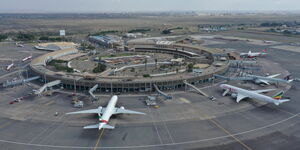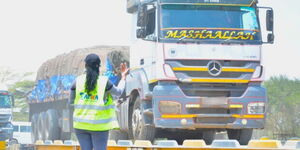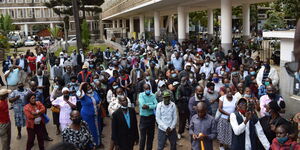Ever wondered why an aeroplane's tyres consist of a simple shaped pattern as opposed to the regular symmetrical and asymmetrical tread captured in most conventional automotive tyres?
The tyre tread patterns are designed to increase stability in extremely harsh weather conditions.
To put it into perspective, the simple tread pattern helps to create friction between the tyres and the runway, hence reducing the aeroplane's movement in windy conditions.
In addition, the tread pattern reduces hydroplaning- a condition that occurs when water causes an aircraft or vehicle's wheel to lose contact with the road surface.
In a bid to create traction and enhance the braking effect, manufacturers use a special tread pattern.
According to a report by Bridgestone, aircraft tyres are classified by structure, size, ply rating, and tread pattern, as well as by inflation pressure and tyre profile.
The tyres are manufactured in order to withstand lots of pressure and avoid a blowout, which occurs when an excessive amount of force is exerted on the tyre's inner walls.
According to international experts, aeroplane tyres are required to withstand at least four times the pressure for which they are rated for a period of three to five seconds.
The three common aircraft treads include radial, centre rib and centre rib with deflector. In the case of radial tyres, they are designed with a specific focus on high overloading capabilities while being light at the same time. The tyre is renowned for its excellent landing performance.
On the other hand, centre rib tread helps the tyre to resist wear and tear, improves braking and enhances directional stability.
The rib deflector, which is designed for a rear-engined jet aircraft, assists in deflecting runway water from the engine.
In aviation, pilots and aeronautical engineers consider four key periods to prevent the tyres from deflation or blowouts: Ground operations such as taxiing (when an aircraft is moving slowly along a road surface before it takes off), take-off, post-take-off and landing.
Pilots are advised to follow the flight manual guidelines during landing, take-off or making emergency stops in a bid to prevent any incidents from occurring.












